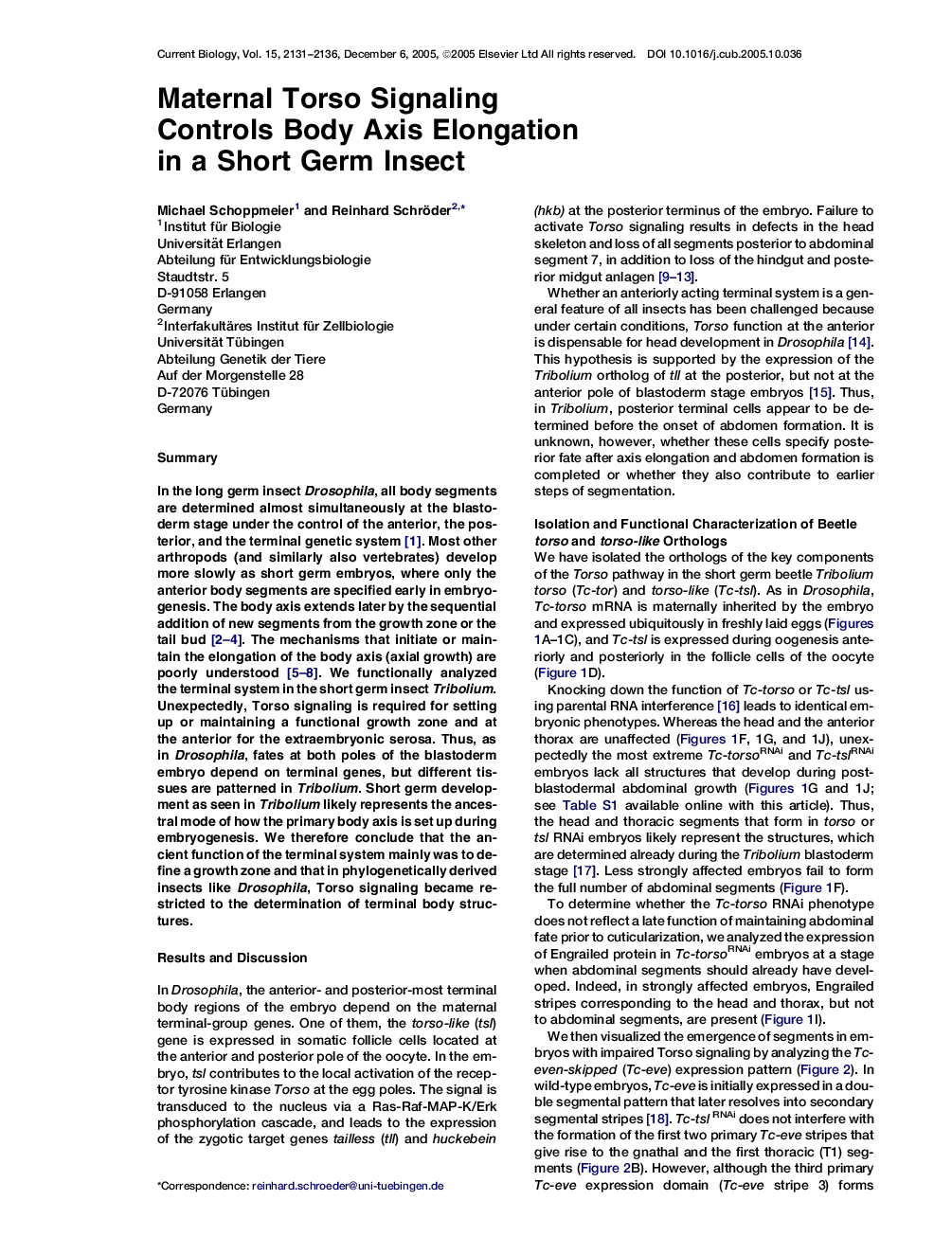| Article ID | Journal | Published Year | Pages | File Type |
|---|---|---|---|---|
| 2045069 | Current Biology | 2005 | 6 Pages |
SummaryIn the long germ insect Drosophila, all body segments are determined almost simultaneously at the blastoderm stage under the control of the anterior, the posterior, and the terminal genetic system [1]. Most other arthropods (and similarly also vertebrates) develop more slowly as short germ embryos, where only the anterior body segments are specified early in embryogenesis. The body axis extends later by the sequential addition of new segments from the growth zone or the tail bud 2, 3 and 4. The mechanisms that initiate or maintain the elongation of the body axis (axial growth) are poorly understood 5, 6, 7 and 8. We functionally analyzed the terminal system in the short germ insect Tribolium. Unexpectedly, Torso signaling is required for setting up or maintaining a functional growth zone and at the anterior for the extraembryonic serosa. Thus, as in Drosophila, fates at both poles of the blastoderm embryo depend on terminal genes, but different tissues are patterned in Tribolium. Short germ development as seen in Tribolium likely represents the ancestral mode of how the primary body axis is set up during embryogenesis. We therefore conclude that the ancient function of the terminal system mainly was to define a growth zone and that in phylogenetically derived insects like Drosophila, Torso signaling became restricted to the determination of terminal body structures.
